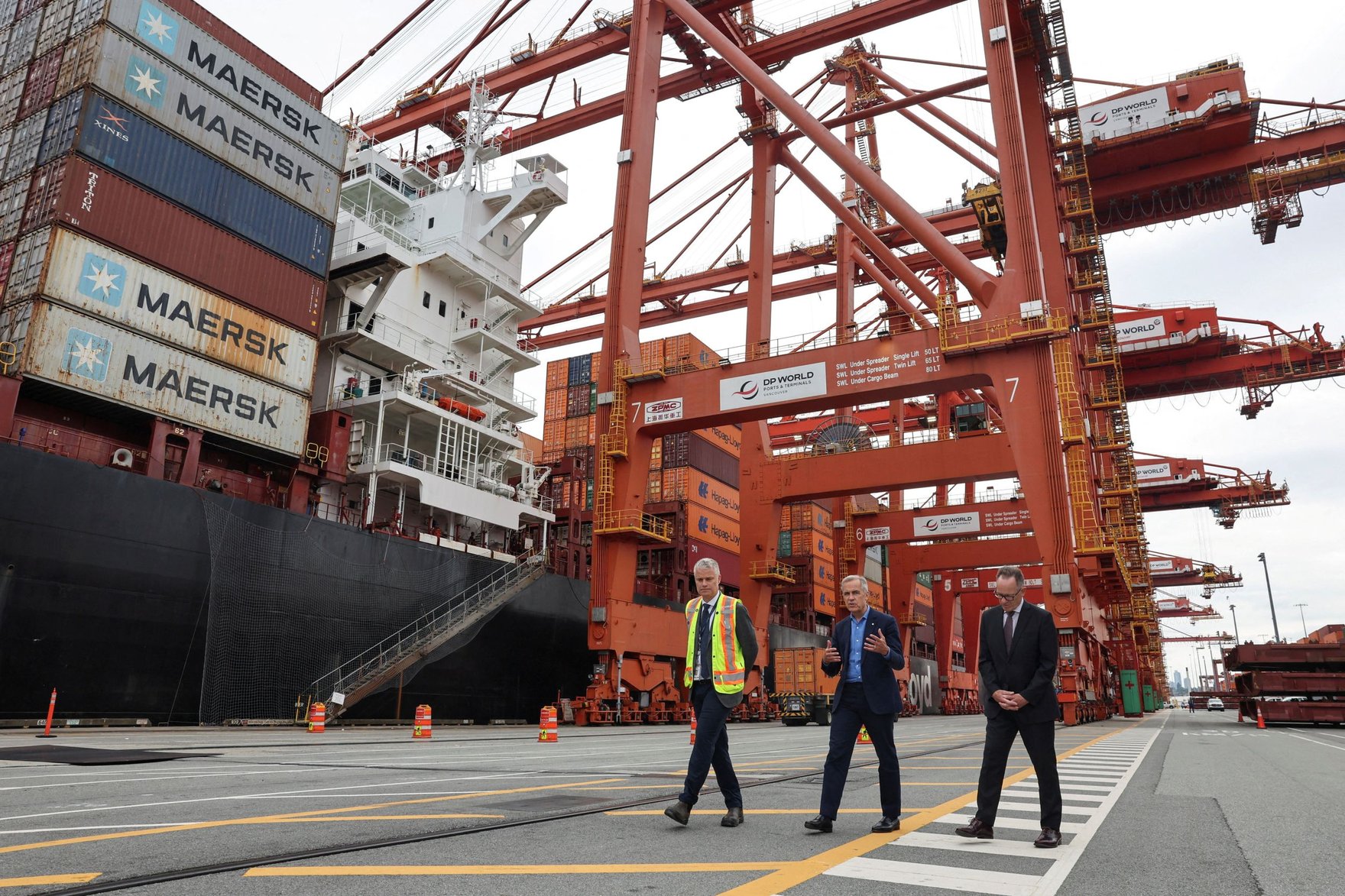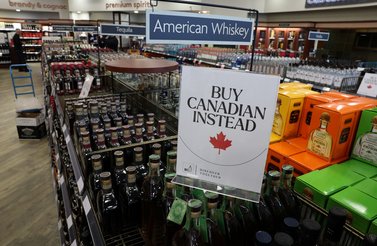There is a clear and growing consensus that Canada has been too complacent and reliant on the United States. With more than 75 percent of our merchandise exports going to the United States in 2024 and more than 50 percent of our imports sourced from our southern neighbour, we need to aggressively diversify our trade and business relations to other markets. As Prime Minister Mark Carney said at the May 13 Cabinet swearing-in ceremony, Canada is at a “hinge moment in our history.” Our country has rarely had such an opportunity to reinvent its trade. While the federal government has a strategy in place to diversify trade, Canadian trade needs to grow at a pace that demands we look beyond our historical comfort zones. The question now is, how do we do this? What do businesses need — both those already engaged in trade and those looking to new markets — to actually do the hard work?
Some solutions are obvious, such as conducting market research before making any decision. However, given the need for trade to grow at an unprecedented rate, less orthodox solutions are also needed. First, we propose that the government should provide support for imports, similar to those currently in place for exports. Second, new financing tools should be created to expand outward investment. These tools will enable Canadian businesses, both small and large, to fully capitalize on the opportunities they see and to expand to new markets in a competitive way. Canada has the chance to not only grow but also to demonstrate a new approach to facilitating business in international markets and diversifying supply chains.
Trade Goes Two Ways
The first solution is realizing that Canada needs to do more to support two-way trade, rather than just exports. Export Development Canada (EDC) was established in 1944 and viewed as an innovative “leap of faith.” As an export credit agency, EDC provides innovative financing and insurance for Canadian exporters. It enabled Canada to sustain the momentum of its booming wartime economy in peaceful times. Over its 81-year history, EDC has helped generate well in excess of one trillion dollars in Canadian exports and investments. Trade, however, does not only consist of exports. The COVID-19 pandemic and the current trade tensions with the United States have shown how supply chain vulnerabilities can have devastating economic consequences.
Companies need goods to make other goods, and not everything can be grown, mined, manufactured or invented in Canada. The Organization of Women in International Trade (OWIT), whose members engage in international trade every day, have pointed out that women-owned businesses in Canada, while being successful exporters with the potential to grow and expand, import more than they export. These companies are not alone. The communiqué issued in May by the Business 7 engagement group of the G7 highlights the importance of mitigating supply chain shocks and de-risking companies’ global supply chains.
Trade, by its very nature, is a two-way relationship, and the federal government should encourage critical imports as well as exports for Canada’s future.
In this new era for the Canadian economy, the country needs another leap of faith. We need the capacity to provide similar financing services as offered by the EDC but focused on supporting importers of all sizes and ensuring that they, too, can access financing for Canadian production. This endeavour could take the form of an entirely new agency, an expansion of EDC’s mandate, or it could be linked to the Business Development Bank of Canada (BDC). Whatever form it takes, the creation of such import-financing capacity would mark another turning point in Canada’s economic future. Canadian businesses are importing raw materials and key manufactured inputs, transforming them into products, creating local jobs, creating local companies and — in many cases — products for export. Trade, by its very nature, is a two-way relationship, and the federal government should encourage critical imports as well as exports for Canada’s future.
Investment and Trade Must Work Together
With the establishment of FinDev Canada, Canada’s Development Finance Institution, in 2018, Canada recognized that supporting and promoting outward investment was good for our exports, two-way trade and inward foreign direct investment. In all developing economies, local producers and consumers want to know that international businesses are there for the long haul, not just for quick, transactional relationships. This means making long-term investments and taking the time to build resilient partnerships. Not every market is ready for Canadian products or able to produce goods that meet Canadian standards and expectations.
One example is the blue economy (that is, products that come from the oceans and other waters), which is growing rapidly in Vietnam, one of the 12 trading partners of the CPTPP (Comprehensive and Progressive Agreement for Trans-Pacific Partnership) and a priority market for Canada. However, not all these products are made or packaged according to Canadian standards. As such, investments are needed to help Vietnamese companies produce Canada-ready products. In turn, these products can then be more effectively used by Canadian companies to make, for example, seaweed-infused beverages. This is not only the case for Vietnamese businesses: the global trade finance gap is estimated at over $2.5 trillion, with small and medium-sized businesses in Canada and beyond struggling to obtain business development financing from financial institutions. This presents the opportunity for Canada to become a more competitive player in the world of trade and development finance, which is increasingly important as the markets that we need to target for new trade agreements are mostly in the Global South.
Global Opportunities with Global Importance
By expanding import supports and international investments, Canada has the opportunity to rapidly expand in economies such as Vietnam’s. The global trade finance gap is costing Canadians money and opportunities around the world.
This may be most pronounced in Africa. Earlier this year, The Economist rightly pointed out that businesses across Africa struggle to get capital, despite having demonstrated success; a case in point was Muina Wosornu’s business, Prête Cashews, in Ghana. Despite having year-on-year profits, when she called her bank for a loan, the interest rate provided was well over 30 percent. In Canada, while not illegal, such rates are usually described as predatory lending. Canada’s new Africa Strategy, released in March, is an opportunity to bring investment, supply chain diversification and two-way learning for the benefit of Canada and Africa.
David Hornsby of Carleton University wrote in February that “Africa’s geopolitical and economic trajectory is reshaping the global order. With the African Continental Free Trade Area (AfCFTA) poised to become the world’s largest single market…the continent is no longer a peripheral player — it’s a cornerstone of the 21st-century economy.” While a good starting point, the Africa Strategy, unlike the Indo-Pacific Strategy, has no budget nor firm time commitments on implementation; no Cabinet ministers were at the launch, which media were not allowed to attend. Canada has a narrow window to be a significant player on the continent, and this window is rapidly closing. China is now Africa’s number-one trading partner, with the European Union, India, Turkey, the United Arab Emirates and Japan eager to catch up.
In the case of Latin America, while there is no comprehensive strategy in place, Canada does have trade agreements in place with several countries in the region through either bilateral or plurilateral accords, including Chile, Colombia, Costa Rica, Ecuador, Honduras, Mexico, Panama and Peru. However, we do not have any trade agreement with the largest countries in the region, which form the bloc Mercosur — Argentina, Brazil, Paraguay and Uruguay — the fifth-largest trading bloc as a group globally, and accounting for 70 percent of the region’s GDP. Canada’s trade negotiations with Mercosur have been stalled for years, but now is the time to unlock the potential of this huge market of 295 million people with a combined GDP of more than US$5 trillion and including two Group of Twenty countries (Argentina and Brazil).
Trade means building partnerships and markets together. To engage in this new world of trade, Canadian businesses need new tools to encourage diversification away from the United States.
Mercosur has recently concluded its trade agreement with the European Union, providing preferential trade arrangements between these two blocs. Canada risks being left behind. The potential for Canadian exports of goods and services to Mercosur is high and includes automobiles, pharmaceuticals and aluminum, all hit hard by the current US tariffs. Additionally, these countries are often aligned with Canada’s other interests, such as ensuring that the benefits of trade are widely shared across society.
One way to improve trade facilitation in new markets is by expanding FinDev’s risk tolerance. At present, FinDev does not do direct investing and will not do deals under $20 million. Instead, they are a fund of funds, putting the burden of asset management on the private sector. The result is that, for businesses like Prête Cashews that need a loan of less than $2 million to export to Canada, FinDev is out of their league. The recent report by the Mastercard Foundation, Investing for Impact, highlights the same systemic investment gaps that, if solved, would positively influence entire value chains and create market-wide, scalable and sustainable solutions.
Canada must develop new, innovative financing tools for Canadian businesses to enable them to invest at home and abroad. Prime Minister Carney is uniquely qualified to advance such an endeavour. He and his government have an opportunity to create new financial products that can be used as international benchmarks of what can be done to catalyze trade diversification.
Trade for the Future
It is known that companies that engage in international trade are more likely to be innovative, productive and inclusive, and to pay higher wages. Canada is at a unique point in history that demands a new leap of faith. By providing financing and enabling imports used in production, Canadian businesses can make more competitive and innovative products for buyers around the world. By creating new types of international investment products, Canadian businesses can prove to foreign markets that they are reliable partners, willing to put their money where their mouth is. Trade means building partnerships and markets together. To engage in this new world of trade, Canadian businesses need new tools to encourage diversification away from the United States.
Canada needs to accelerate trade so rapidly that the country must get outside its comfort zone and learn to be comfortable with discomfort. Our country has so much to leverage to achieve trade diversification, such as the 15 free-trade deals covering 51 countries, giving it preferential access to 1.5 billion consumers, the large diasporas who know their countries of origin well and a long history of welcoming international students. These are relationships Canada could nurture more effectively to create business and entrepreneurship opportunities. Ultimately, our country is not adequately leveraging or coordinating all these assets. In this new era, trade must be treated as a strategic national priority, backed by bold policy, smarter tools and a mindset ready to compete and collaborate beyond our borders.




